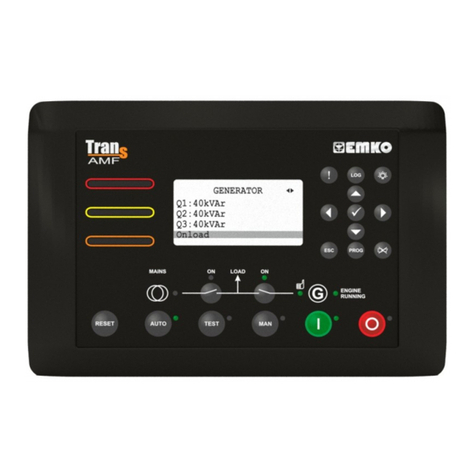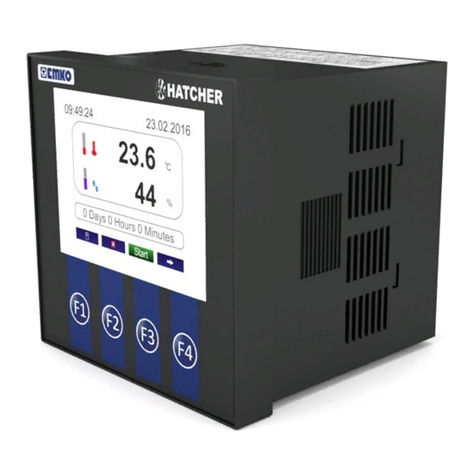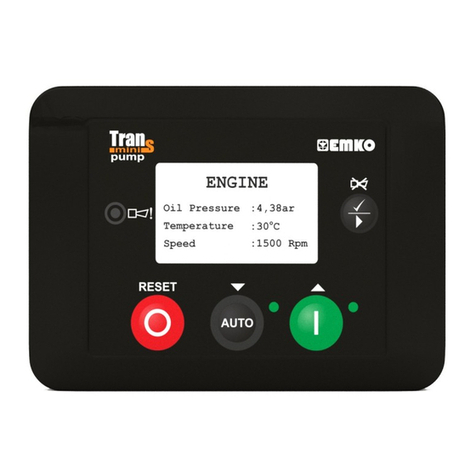1.INTRODUCTION................................................................................................................................
2.INSTALLATION..................................................................................................................................
3.ELECTRICAL CONNECTIONS..........................................................................................................
1.1 GENERAL SPECIFICATIONS...................................................................................................
2.1 GENERAL DESCRIPTION........................................................................................................
2.3 PANEL CUT-OUT.......................................................................................................................
2.4 ENVIRONMENTAL RATINGS....................................................................................................
2.5 PANEL MOUNTING...................................................................................................................
2.6 INSTALLATION FIXING CLAMP................................................................................................
2.7 REMOVING FROM THE PANEL...............................................................................................
3.1 TERMINAL LAYOUT AND CONNECTION INSTRUCTIONS....................................................
3.4 UNIT WIRING............................................................................................................................
1.2 WARRANTY...............................................................................................................................
1.3 MAINTENANCE.........................................................................................................................
2.2 DIMENSIONS............................................................................................................................
3.2 ELEKTRICAL CONNECTION DIAGRAM..................................................................................
3.2.1 EAOM-19 SINGLE PHASE CONNECTIONS SCHEMATIC FOR TN-C AC POWER
SYSTEMS........................................................................................................................
3.2.2 EAOM-19 THREE PHASE CONNECTIONS SCHEMATIC FOR TN-C AC POWER
SYSTEMS........................................................................................................................
3.3 TOP LABEL VIEW OF THE EAOM-19......................................................................................
3.5 UNIT WIRING DESCRIPTION..................................................................................................
4.1 FRONT PANEL DESCRIPTION................................................................................................
4.2 ACCESSING TO THE OPERATOR PARAMETERS.................................................................
4.3 ACCESSING TO THE TECHNICIAN PARAMETERS...............................................................
4.4 PARAMETER LIST....................................................................................................................
4.5 EXPLANATION OF PARAMETERS..........................................................................................
4.5.1 MAINS VOLTAGE CONNECTION (P00) AND DISCONNECTION LEVEL (P01),
UPPER LIMIT (P02).........................................................................................................
4.5.2 ALTERNATOR VOLTAGE LOWER (P03) AND UPPER LIMIT (P04), FAULT CONTROL
DELAY (P20)....................................................................................................................
4.5.3 ALTERNATOR FREQUENCY LOWER LIMIT (P51) AND UPPER LIMIT (P52), FAULT
CONTROL DELAY (P21).................................................................................................
4.5.4 ENGINE COOLING TIME (P07).......................................................................................
4.5.5 MAINS TRANSITION DELAY (P09).................................................................................
4.5.6 BATTERY VOLTAGE LOWER LIMIT (P11)......................................................................
4.5.7 STOP / FUEL SOLENOID SELECTION (P13).................................................................
4.5.8 STOP MAGNET ENERGISED TIME (P14)......................................................................
4.5.9 ENGINE STARTED SIGNAL (P15)................................................................................
4.5.10 STARTING ATTEMPT DURATION(P16), NUMBER OF STARTING ATTEMPTS(P06)..
4.5.11 CONTROL ON DELAY (P19)..........................................................................................
4.5.12 CONFIGURABLE INPUTS 1 AND 2 (P22 AND P23).....................................................
4.5.13 HORN OUTPUT SELECTION (P24)..............................................................................
4.5.14 CHOKE TIME (P25).......................................................................................................
4.5.15 GENERATOR START DELAY (P26)..............................................................................
4.5.16 OIL SENSOR SELECTION (P27)..................................................................................
4.5.17 ENGINE WORKING TIME (P28).....................................................................................
4.5.18 OPERATOR PASSWORD (PoPS)..................................................................................
4.5.19 TECHNICIAN PASSWORD (PtPS).................................................................................
5.1 MANUAL MODE........................................................................................................................
5.2 AUTO MODE.............................................................................................................................
5.3 TEST MODE..............................................................................................................................
4.DEFINITION OF FRONT PANEL AND ACCESSING TO THE PARAMETERS................................
5.COMMISSIONING..............................................................................................................................
CONTENTS
3
Page 6
Page 19
Page 13
Page 8
Page 9
Page 6
Page 7
Page 7
Page 9
Page 10
Page 11
Page 11
Page 12
Page 12
Page 13
Page 14
Page 14
Page 15
Page 16
Page 17
Page 18
Page 19
Page 21
Page 23
Page 25
Page 26
Page 26
Page 27
Page 27
Page 27
Page 27
Page 27
Page 28
Page 28
Page 28
Page 29
Page 29
Page 29
Page 29
Page 31
Page 31
Page 32
Page 32
Page 30
Page 30
Page 30
Page 30
Page 27

































